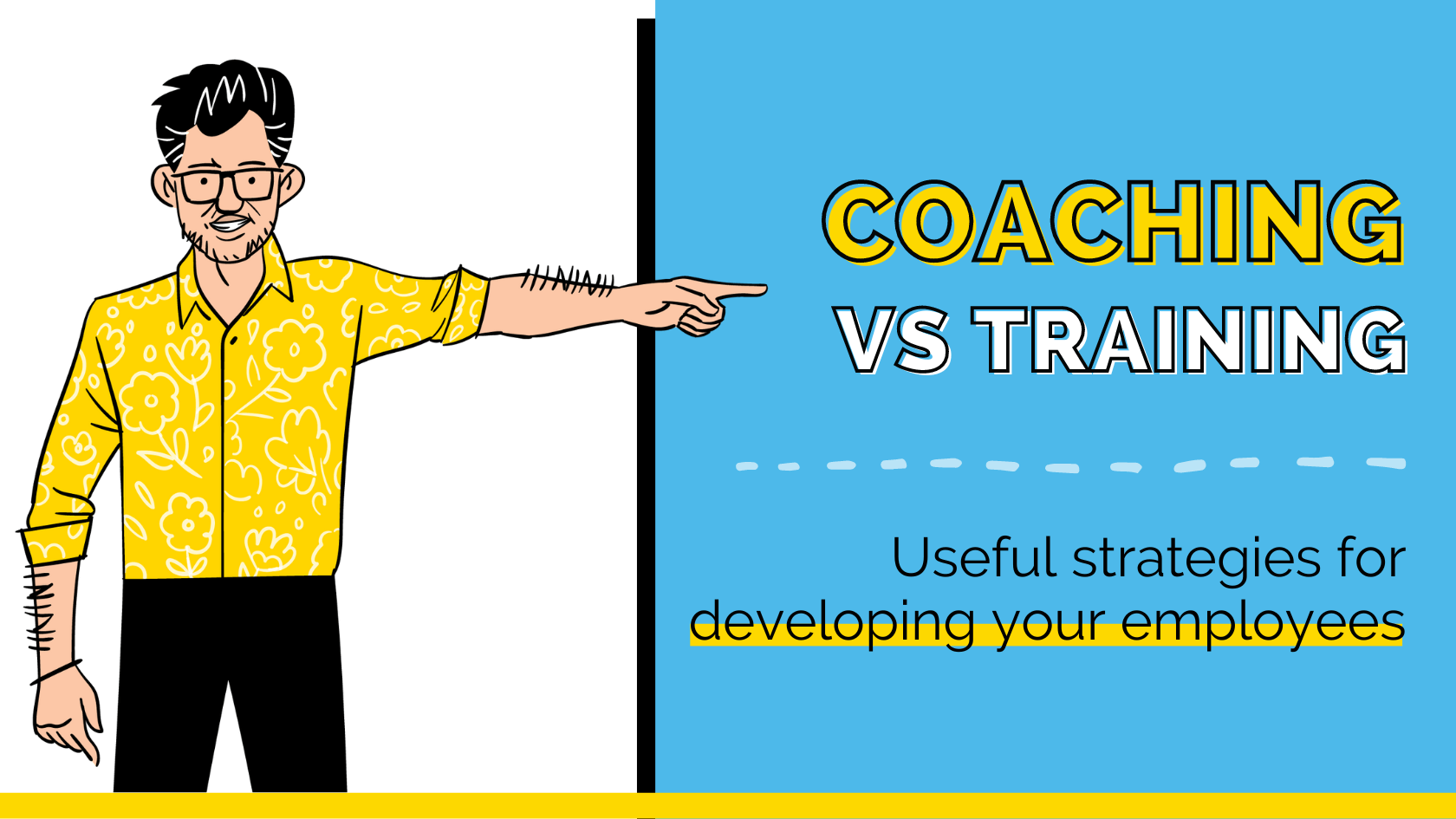As a leader, you no doubt want the best for your team. You want them to develop, think bigger, thrive, and grow. You want them to be the highest versions of themselves possible.
To do this, many managers throw endless textbooks, courses, workshops, seminars, and keynotes at their employees. Knowledge, after all, is power – so who wouldn’t want endless training opportunities?
The problem is that development doesn’t always mean filling your employee’s cup with more information. No doubt about it, training is important, but often, an essential element is missing – and that’s coaching.
To step fully into your role as a teacher and facilitator and create learning opportunities for your people, you have to strike the right balance between training and coaching.
But what’s the difference between the two? And when is the best time to use them?
Follow me and I’ll break them down below.
What Is Coaching?
Coaching is often talked about like it’s a mystical art, practiced only by an elite, slightly woo-woo inner circle.
And I get why you would think that if you didn’t know anything about it! But let me unweird coaching for you:
As a manager, you don’t need to ‘become a coach’ or spend oodles of time coaching.
Really, effective coaching is simply about slowing down the rush to give advice and staying curious just a little longer – all you need is 10 minutes or less and the seven essential questions from my book The Coaching Habit.
This segues nicely into the next question – why bother developing a coaching management style at all? Well, reader, There are two primary reasons:
- As a leader, you’ll get to work less hard and have more impact. As you nurture independence and autonomy in your people through coaching, they’ll flourish. You’ll no longer spend your time feeling burned out from putting out fires and trying to save the day.
- You get to help those you lead. As Dan Pink laid out beautifully in his book Drive, what really motivates someone isn’t money and status, but a sense of mastery, autonomy, and purpose.
This is exactly what a coaching habit does. It’s a fast, clean intervention to drive autonomy (the person you’re interacting with comes up with their own answer), mastery (questions create learning moments, advice does not), and purpose.
What Is Training?
While coaching is about helping your people unlock their greatness and develop their potential, training is more competency-based.
Let’s say your organization moves to a new customer relationship management system. You’re going to need to train your people on how to use it – whether that means enrolling them in an eLearning course or hosting a session with a trainer from that company.
But training isn’t just for systems and tech – it can also be skills-based.
Think about the first office-based job you had. You probably didn’t know how to send corporate-sounding emails, how to use the workflows for certain projects or what was truly expected from you. Training helps fill these gaps and lays the foundations for people to do their jobs effectively.
What’s the Difference?
If training is all about laying foundations, then coaching is about facilitating the growth of the person after that. Here’s a closer look at the differences between the two:
Focus and Objectives
One of my favorite definitions of what coaching vs training is comes from Sir John Whitmore, pioneer of the GROW model in coaching.
In part, he says that coaching is “helping them learn, rather than teaching them.”
This is a useful distinction. Training is teaching – let me tell you what to do – while coaching is learning – let me ask you what you think.
More than that, training objectives tend to be analogous across the board.
These sessions – whether they’re away days, online, or in the office – aren’t catered to the individual. They’re about equipping attendees with certain, pre-defined skills that improve work performance.
Coaching is wildly different. Here, you’re focused on engaging with your people as individuals, and you’re not trying to teach them anything in particular or give them advice on how to do something. You’re helping them to step into their own potential by giving them the time and space to think for themselves and come up with their own solutions.
Magic happens in these micro-moments. As the people you lead realize that they can solve their own problems, they’ll become more confident, more independent, and more capable.
It’s no wonder that most successful, great leaders report leaning into a coach-like mindset. It’s a surefire (and also relatively easy) way to help your people become the best versions of themselves.
Methodology and Duration
Training usually occurs over an established period, ranging from one hour to a couple of weeks. Plenty of methodologies exist – from instructor-led classroom training to eLearning modules or hands-on training.
Quite often, training is accompanied by a quiz or test towards the end of the program to assess how much the person being trained has learned during the interaction.
Coaching, on the other hand, is much more fluid and evergreen as a practice. There’s no end date, no formal sessions, and no tests or quizzes. Instead, it is about transforming the interactions you already have to make them more coach-like.
To do this, I recommend following these three principles from The Coaching Habit:
- Be often. Keep coaching to 10 minutes or less. If you can’t, you don’t have time for coaching.
- Be lazy. Keep it simple. You don’t need a psychology degree or an understanding of esoteric coaching models. Seven good questions and the discipline to make asking them a habit is all you need.
- Be curious. Strive for drip irrigation (not the occasional flash flood). Make asking questions a regular act rather than adding more to your workload.
Outcome and Application
Heard of the 70, 20, 10 rule?
According to Harvard Business Review, formal training counts for just 10% of employee learning, while 20% comes from guidance from colleagues and managers.
The other 70%? Solving challenges on the job (AKA self-learning and being coached).
That’s not to say formal training isn’t useful. As research shows, 83% of employees want learning and development opportunities. They see it as vital to career progression, if not alone to show their skills and proficiencies on their CVs or when applying for a promotion.
However, the outcome and application of training can’t compare to the power of coaching.
This is because people don’t learn when you tell them something (and training is all about telling). No, people only really learn when they have a moment to reflect on what just happened – and asking a question is a beautiful way to do it.
The Role of the Instructor
In training, the instructor’s MO is: “I’ve got a bunch of stuff to teach you, so listen up!”
The instructor is there to share their wisdom and improve the group’s skills. There’s a lot of telling from the instructor and a lot of listening from the trainees.
This is understandable. It’s not the instructor’s job to think about the idiosyncrasies of the individuals attending or to facilitate their personal growth. They’re simply trying to transfer knowledge to their audience.
Coaching employees flips the switch entirely – in this scenario, the coach listens, and the audience talks.The underlying idea is to become a facilitator and empower the person being coached to stretch their potential and step into their best self.
When to Choose Training and When to Choose Coaching
There’s a time and place for training, but it’s probably a lot less often than you think. If you want your employees to learn a specific skill, gain certification, or become familiar with a new piece of software, then training can be invaluable.
But if you’re hoping to help your people become more self-sufficient, confident, and autonomous, coaching is the way forward. After all, it’s only by giving people the space to grow and learn and think bigger that you’ll unlock their greatness.
If you’d like support unlocking your own greatness, I encourage you to check out my private online membership community, The Conspiracy. It’s where ambitious, kind humans like yourself make meaningful progress on big dreams—through structure, coaching, accountability, and a global network of support.

